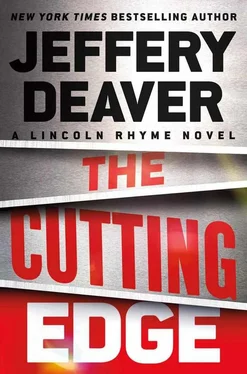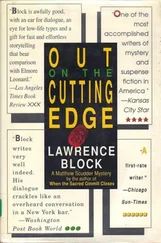The escape plan had been long in the making — from the moment El Halcón had been taken into custody after the shoot-out at the warehouse on Long Island.
Carreras-López had known that a legal defense wouldn’t work — El Halcón had in fact grabbed the pistol of the warehouse manager, Chris Cody’s, and shot Barry Sales, the cop on the tactical team. Escape was the only option. He’d called a troubleshooter whom the cartels in Mexico sometimes used, a man in Geneva, Switzerland, named François Letemps. Carreras-López had paid a million-dollar deposit against a three-million-dollar fee for Letemps to break the man out of custody.
Letemps had suggested staging the escape in some locale other than New York, which he viewed as problematic. But, no, that wouldn’t work. There could be no change of venue; the Eastern District of New York had sole jurisdiction. And once he was convicted, as surely he would be, he would be in high-security lockdown until he was transferred by a government plane to the infamous Colorado super prison, from which escape was not possible.
No, New York was the only option. And since the federal courthouse in Brooklyn was the most vulnerable spot in the system, Letemps set to work on a plan to orchestrate a mass evacuation of the courthouse when El Halcón was present. In the chaos, it should be possible to take control of his armored transport van and escape.
But simply calling in a bomb threat, for instance, would have been far too suspicious and brought even more law enforcement down on El Halcón, Letemps reasoned.
He therefore decided to create a potentially deadly gas leak in the courthouse for reasons that appeared to have nothing to do with any escape attempt. Specifically, Letemps’s plan provided, a mercenary — hired to sabotage geothermal drilling nearby — would set gas bombs in the neighborhood.
Letemps had arranged for a shipment of diamond-rich kimberlite to be delivered to New York from Botswana. Carreras-López had some of his men, who’d accompanied him from Mexico, strew these rocks around the geothermal site and the waste dump where debris from the site was taken. One of the men also took some kimberlite to a famous diamond cutter — Jatin Patel — who had it analyzed and found that it was indeed diamond-rich stone. Whatever Patel thought of the stone was irrelevant. The plot merely depended on getting the kimberlite to him.
Letemps himself pretended to be the contractor representing New World Mining in Guatemala, which was not involved in any way. He hired Andrew Krueger to plant the bombs and kill Patel and the assayer Weintraub. Then that mad Russian had showed up, worried about the diamond find too, but in the end none of that mattered. The important thing was that the police were convinced there was a series of gas line devices planted throughout Brooklyn, near the courthouse.
Any other gas leaks would immediately be attributed to Krueger and his attempts to sabotage the drilling.
Poor Andrew Krueger — he was merely an oblivious pawn; he believed that he’d been hired by the Guatemalan mining company and had no idea that he’d been set up. And set up to fail: A key part of the plan was making sure the police figured out the diamond lode sabotage plot.
Lincoln Rhyme had, unwittingly, accommodated in this regard.
With a frown of concentration, Carreras-López jotted more notes on the pad before him. He shook his head, crossed off one entry. Added another. This was an important document: a grocery list for a dinner party he was planning to cook in Mexico City tomorrow night. His wife did not enjoy the kitchen; he did.
Chicken, poblano peppers, crème fraîche, cilantro, white Burgundy wine (Chablis?).
Now, as El Halcón pretended to read some court documents and fantasized about añejo tequila, the building shook with a faint tremor.
This was the result of a C4 charge planted not by Krueger but by one of Carreras-López’s men at the geothermal site. This IED was not on a timer but had been detonated by radio signal, as the explosion had to coincide with El Halcón’s presence in the courthouse.
The guards in the hallway outside looked briefly at each other, then returned to staring at nothing.
Carreras-López’s mobile gave a brief tone. He looked at the text.
Your aunt has been discharged from hospital.
This meant that the lawyer’s men were beginning to release the natural gas odorant — not the gas itself — into the courthouse HVAC system from outside the building.
Carreras-López switched his screen to the local news. A breaking story reported yet another explosion, meant to mimic an earthquake. Residents in Brooklyn were urged to be on the lookout for gas leaks and to evacuate immediately if they were aware of any. Another text:
Her ride has arrived.
The helicopter had landed and was standing by at a construction site in Brooklyn, near the water — the craft that would spirit Carreras-López and El Halcón to an airstrip on Staten Island, where private jets would speed them to, respectively, Caracas and Mexico City.
Carreras-López prepared himself for what was coming next: the emergency evacuation of the courthouse. The guard detail would have Carreras-López leave and would usher El Halcón to his armored van in the loading dock on the ground floor for transport back to the detention center.
But El Halcón’s evacuation wouldn’t go quite as the federal marshals planned. The armored transport van would not be driven by the guards assigned to the vehicle. Carreras-López’s men, dressed in guard uniforms, would have shot them with silenced weapons and taken over the van. It would drive up to the exit to await El Halcón and his two guards. Once they were in the van and the door closed, those guards would die too and the van would speed to the helicopter.
By tomorrow El Halcón would be enjoying life in his compound outside of Caracas. And Carreras-López — to whom no links to the plot could be proven — would be at home whipping up a Latin coq au vin, his own recipe.
And marveling at the plan.
Gracias , Monsieur François Letemps.
Or, merci .
Accompanying this thought was the first whiff of natural gas.
His eyes rose and met those of his client. El Halcón’s brow furrowed only slightly. Carreras-López ripped the grocery list from his yellow pad and carefully folded and slipped it into his pocket.
Only sixty seconds later the door burst open and the guards streamed inside.
“The building’s being evacuated.” To Carreras-López, one said, “Out the main exit. Front.” Then turning to El Halcón. “You’re coming with us. Not a word. Keep your head down and walk where we tell you.”
Out of courtesy, or adherence to the rules, they repeated the statement in Spanish. El Halcón rose to his feet and a guard bent to undo the shackles from the floor rings.
With concern on his face, Carreras-López asked, “But what’s going on?”
“Gas leak. That asshole set the gas bombs? In the news? He planted one here or nearby. Move. Now!”
“ Dios mío! ” Carreras-López muttered and, blessing himself, walked to the doorway.
He had asked for chaos and chaos had been delivered.
Antonio Carreras-López was across the street from the prisoner entrance loading dock of the federal courthouse. He was on the second floor of a coffee shop, where he had planned to observe the operation.
The streets were jammed with rescue workers — actually rescue preparers since no explosions or conflagrations had yet occurred. Fire trucks, police, ambulances. The press too, of course. And plenty of gawkers, arms lifted like saluting Fascists as they held high cell phones to record the anticipated carnage. Loudspeakers urged pedestrians and onlookers to back up behind the barricades. “Immediately! There is a major fire and explosion risk! Move back!” The voices were stern. Nobody paid any attention to the warnings.
Читать дальше







![Джеффри Дивер - Where the Evidence Lies [A Lincoln Rhyme Short Story]](/books/403782/dzheffri-diver-where-the-evidence-lies-a-lincoln-r-thumb.webp)




